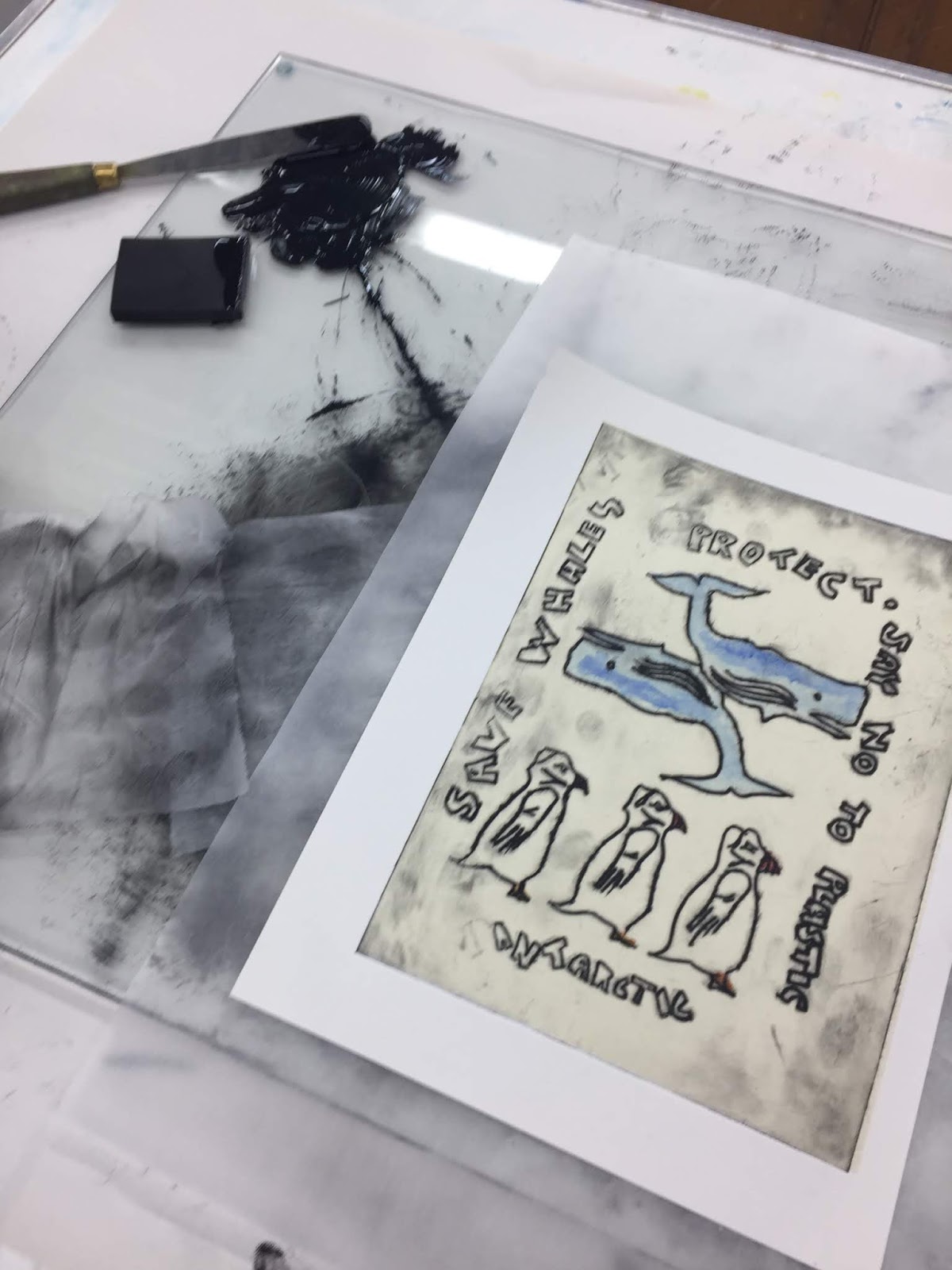| Roller to squeeze out access water out of paper. |
Intaglio Printing
Intaglio is the family of printing and print making techniques in which the image is cut into the surface. Lines are sunken into the surface which holds the ink. It is the opposite to a relief print (Lino). The Vintage cast iron machine below is a press for printing I have been wanting to use this for some time and it is ideal for intaglio printing. |
| Original Puffin drawing from sketch book |
| Printing Press for intaglio print |
|
sketch from sketch book used in design.
|
| Single colour black Intaglio print.With Original sketch of whale above. |
Intaglio Printing press used to create print.
Intaglio print using plastic relief , aluminium can also be used.
| Intaglio print with water colour added using really thin paper added on top. |
Paper needs to be dipped into water bath and then rolled between two thick water colour papers and pressed using roller.This takes the water out ,however the paper is still damp to go through press.
I have added aqua shading to the intaglio print above. I will be re working this print reducing gap between birds and whales.I will also add more lettering around and make sure its the right way around. Next time I do the aqua shading i will add less paint.
Method used for Intaglio : I chose to use a plastic sheet A5 specifically created for intaglio printing. This is any easy method as you can see your drawing behind and cut into the surface with a special intaglio tool. Dry point clear plastic means you can trace over drawings and then you can go straight into printing. However you do need to reverse lettering so it comes out the right way.
Aluminium sheets can be used and are better for darker colours than lighter.
Another method is the traditional etching technique using etching zinc metal which is more expensive, it also involves using chemicals and wax. Using wax on top of zinc you then scratch it off. Then it goes into acid to remove a layer of the surface.
Ink used: Using Intaglio ink plus oil mix with a palette knife until mixed well.
- Using a rubber square add a small amount of ink to intaglio etching, only ink what you have etched.
- Using a piece of scrim fabric roll into a ball, push the ink down into the etching plate. Give it some pressure to push the ink into the etching.
- Take some tissue paper and wipe away access ink.
- Wet your paper in a water bath and dry between some thick paper using a roller.
- Then put through press in between tissue paper and fabric(tissue underneath,then plate, then paper which you are printing on,then more tissue paper.
- Lay fabric on top roll through press using press arm attached to large wheel.
New Intaglio Print
This is a re drawn intaglio plate ready for printing, next time I’m in the print room.
Initial drawings used for initial intaglio print.This print could be reduced in size and printed into exhibition tickets for final MA show.





